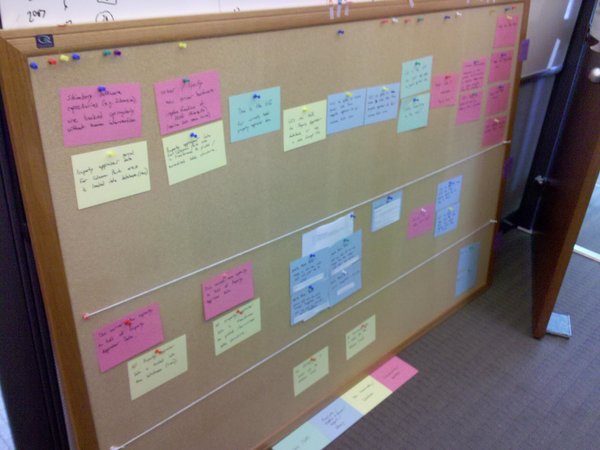Welcome to thatlinuxbox.com Thursday, January 01 2026 @ 07:26 PM UTC
What I learned at the Agile2010 Conference
- Tuesday, August 17 2010 @ 03:50 AM UTC
- Contributed by: Dan Stoner
- Views: 5,989
The Agile 2010 Software Development Conference was held in Orlando, Florida from August 9-13.
The last technical conference I attended was OSCON (Open Source Convention) 2006 in Portland, Oregon. Agile 2010 was a really great opportunity for me to jump-start my transition from system administrator to software developer.
I am part of a small, dispersed team. We currently have multiple active projects with each developer assigned to a project. We are already following practices such as Test Driven Development (TDD), but we have some challenges ahead if we wish to apply additional Agile practices throughout the team.
Before the conference, I scanned our office bookshelf and wrote down the author names from our most respected volumes. It was great to go to a conference and hear the authors speak on these topics and in many cases have a chance to talk with them. I learned something in every session.
Today was my first day back in the office and I immediately got to work trying to implement ideas from the conference. The first artifact of this effort is a shiny new story board that more accurately reflects project scope:

A few concepts presented by Scott Ambler (and others) particularly hit home with my project:
1. Yes, with Agile you still need to do Initial Requirements Envisioning and Initial Architecture Envisioning.
2. Identify major components / subsystems / services first.
3. Flesh out interfaces first... sometimes this is known as "API First".
4. Prove the architecture with working code.
Here are some interesting statistics shared by various speakers at the conference:
1. 82% of failed projects are due to Up Front Requirements Gathering coupled with Change Management (that really becomes Change Prevention).
2. Optimal Agile sprint size = 1 - 1.5 stories / person / sprint.
3. Promiscuous Pairing - in pair programming, the optimal time to switch partners is every 90 minutes!
Here are some gems of knowledge from speakers such as Linda Rising, Mike Cohn, Arin Sime, Craig Smith, and others:
1. It's a Relationship, Not a Sale
2. Distributed (Remote) teams are hard, dispersed teams are even harder.
3. There is a limit to how well a project can go, but no limit to how many problems can occur.
4. Single point estimates almost always overly optimistic. Anchoring makes estimates even worse.
5. EVERY story must have acceptance criteria. e.g. write the "Definition of Done" on the back of each story card.
I learned other things and formed a few opinions, including:
1. Everyone from Milwaukee is friendly and nice.
2. Real Australians do NOT drink Fosters.
3. UX stands for "User Experience" not "Ultra-Extreme!"
4. User Stories / Story Cards are awesome.
5. Story Boards and Story Maps make excellent modeling, visualization, and collaboration tools.
6. Agile Planning and Estimating are crucial skills needed to complete projects on time, on scope, and on budget.
7. I'm starting to identify with the principles of the Agile Manifesto.
8. Mantra: Always stay at the conference hotel.
9. Get a Twitter account.
10. Get a Twitter account 3 years ago before all of the good names were taken.
I hope to post a follow-up story later with pictures from the conference.







 Twitter
Twitter
 LinkedIn
LinkedIn
 GitHub
GitHub



The following comments are owned by whomever posted them. This site is not responsible for what they say.